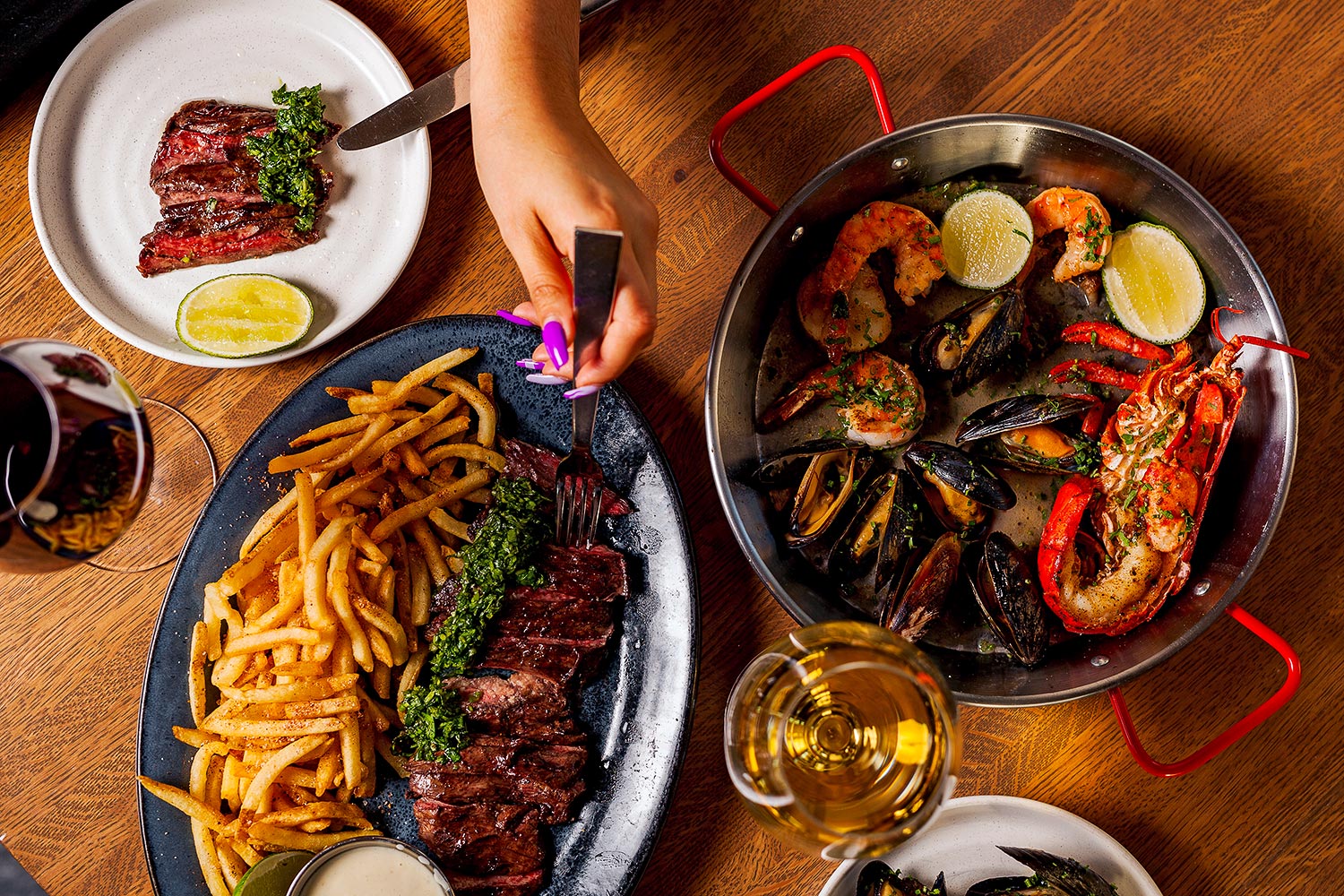I hate to admit it, but I hadn’t really thought about Leña Brava for a while. The Fulton Market Mexican spot, originally under the leadership of Rick Bayless but now under the ownership of his one-time partner Manny Valdes, has been chugging along successfully (if quietly) for years. Now, with a new executive chef and a revamped menu, it should be back at the top of your list.
If you’ve eaten high-end Mexican food in Chicago over the last, oh, 20 years, the name Brian Enyart should be familiar. Enyart spent years inside the Bayless empire, working most notably at Topolobampo, before opening Dos Urban Cantina, one of my favorite restaurants in recent years. As Enyart described it, after Dos Urban Cantina shuttered, he had decided to take a bit of a break to realign his priorities. “I got really into running and cats,” laughs Enyart. However, just a few weeks later, Valdes called and asked him to take a look at Leña Brava. Enyart spent time getting to know the business, before recently becoming the executive chef.
“I’ve been doing this for almost 30 years at this point, working with Mexican cuisine,” explains Enyart. “What I have found really interesting and challenging about this was that it was a departure from the regional cuisine of central Mexico, which I had focused on with Bayless. This is a more free-wheeling exploration of the Baja region.” That said, it was a bit of a learning curve for Enyart. Leña Brava’s kitchen is entirely wood-fired, and he’d not worked in that environment before.
Cooking over a live fire is a logistical challenge; you can’t just turn on a gas burner and cook whatever you want, when you want it. Consider Leña Brava’s desserts — Enyart added a favorite of his, an apple tart. “Apple pie is just so soothing and comforting to me, I constantly go back to that dish.” But you can’t just throw it in an oven. “You have to plan several days out; on Tuesday morning, how hot does the fire need to be, so when do you need to build it, when do the tarts go in? That’s how we address every item on the menu; it all has to interweave as a puzzle. It’s challenging, but in super nerdy subtle ways.”
The focus on Baja cuisine, Enyart believes, is a perfect match for the wood fire. While central Mexican cuisine is all about sauces (think mole), Baja is all about proteins. “What that means for me is a lot of char and smoke, and bringing that primal rustic elegance to things, and not trying to tweeze it, or polish it beyond what it is,” explains Enyart. Roast chicken is served with chiles and lime, putting the flavors from the wood front and center, and there’s a whole California bass from Baja, which Enyart calls a “bold, bright huge piece of fish.” There are also some dishes that come straight from Dos — a scallop crudo with lime jalapeño aguachile and wasabi tobiko offers a hint of the Asian influence that suffuses Baja cuisine (and also helps assuage fans’ pain at losing the restaurant).
The must-order dish for any seafood fan is the baja mariscada; a huge, shareable platter of grilled seafood, including prawns, mussels, scallops, half a lobster, and one of the most delicious-sounding sauces I’ve ever heard of, made with butter, green chile, citrus zest, and lemongrass-infused white wine. “It hits all of my buttons right now.”
Leña Brava’s sister spot, Cruz Blanca, a restaurant and a brewery, is also undergoing changes. Enyart’s goal is to “keep it one foot in the taqueria, one foot in the cool community brewpub vibe.” Rather than focusing on traditional Mexican dishes, they’re branching out, making dishes like a hot chicken taco or a collaboration with J.P. Graziano Grocery across the street to make a giardiniera and carnitas taco.
For a chef like Enyart, with so much experience in Mexican cuisine, cooking at Leña Brava is a freeing experience. “I fell in love with the rawness of it,” he says. “It’s neither fine dining, nor a traditional role of expecting recipes from a particular region of Mexico. It’s come as you are and cook what you will.”



